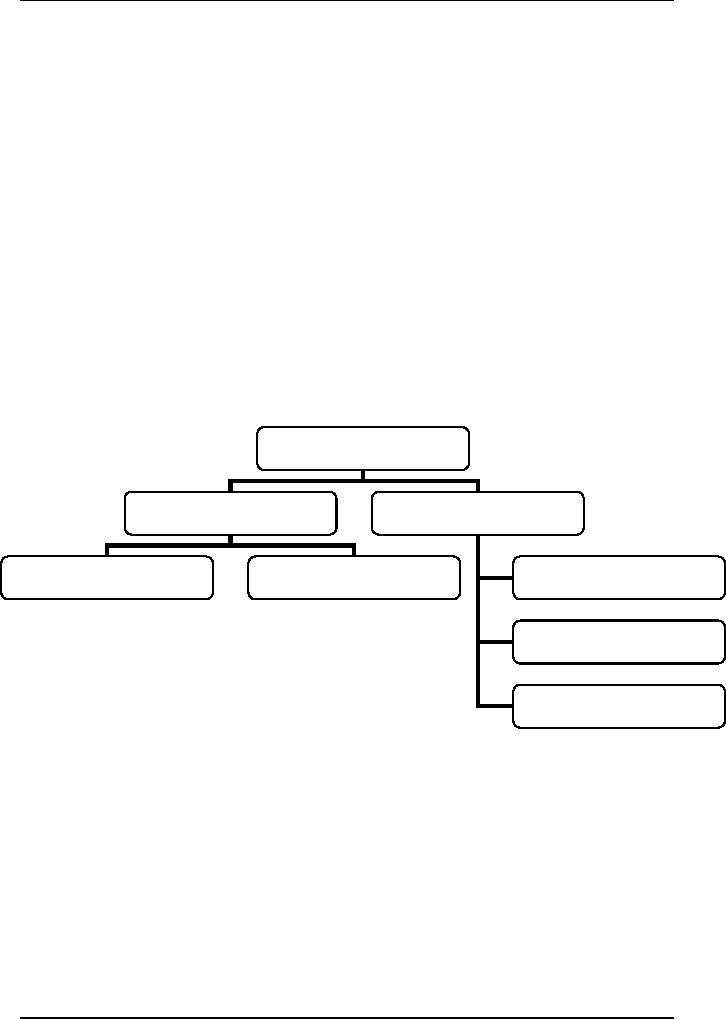 |
Decomposition Techniques, Estimation – Tools |
| << Estimation - Concepts |
| Estimation – Tools >> |

Software
Project Management
(CS615)
LECTURE
# 30
6.
ESTIMATION
6.3
Decomposition
Techniques
Software
project estimation is a form of
problem solving, and in most
cases, the
problem
to be solved (i.e., developing a cost and
effort estimate for a
software
project)
is too complex to be considered in one
piece. For this reason,
we
decompose
the problem, re-characterizing it as a
set of smaller (and
hopefully,
more
manageable) problems.
Before an
estimate can be made, the project
planner must understand the
scope of
the
software to be built and generate an
estimate of its "size."
6.3.1
Software
Sizing
The
accuracy of a software project estimate
is predicated on a number of
things:
(1)
The degree to which the
planner has properly estimated
the size of the
product
to be
built
(2)
The ability to translate the
size estimate into human effort,
calendar time, and
dollars
(a function of the availability of
reliable software metrics
from past
projects)
(3)
The degree to which the
project plan reflects the
abilities of the software
team
(4)
The stability of product
requirements and the environment
that supports the
software
engineering effort.
As
project estimate is only as good as the
estimate of the size of the work to
be
accomplished,
sizing represents the
project planner's first
major challenge.
In the
context of project planning, size
refers to a quantifiable outcome of
the
software
project. If a direct approach is taken,
size can be measured in LOC. If an
indirect
approach is chosen, size is represented as
FP.
There
are four different
approaches to the sizing
problem:
1.
"Fuzzy logic" sizing: This
approach uses the approximate
reasoning
techniques
that are the cornerstone of
fuzzy logic. To apply this
approach, the
planner
must identify the type of
application, establish its
magnitude on a
qualitative
scale, and then refine the
magnitude within the
original range.
Although
personal experience can be used,
the planner should also
have
226

Software
Project Management
(CS615)
access to
a historical database of projects8 so
that estimates can be com-
pared
to actual
experience.
2.
Function point sizing: The
planner develops estimates of
the information
domain.
Its characteristics will be discussed
later in the session.
3.
Standard component sizing:
Software
is composed of a number of
different
"standard
components" that are generic
to a particular application area.
For
example,
the standard components for an
information system are
subsystems,
modules,
screens, reports, interactive
programs, batch programs,
files, LOC,
and
object-level instructions. The
project planner estimates
the number of
occurrences
of each standard component and then
uses historical project
data
to
determine the delivered size per standard
component. To illustrate,
consider
an
information systems application. The
planner estimates that 18
reports will
be generated.
Historical data indicates
that 967 lines of COBOL
[PUT92) are
required
per
report.
This enables the planner to
estimate that 17,000 LOC will
be
required for the reports
component. Similar estimates and
computation are
made
for other standard components, and a
combined size value
(adjusted
statistically)
results.
4.
Change sizing: This
approach is used when a project
encompasses the use
of
existing
software that must be
modified in some way as part
of a project. The
planner
estimates the number and
type (e.g., reuse, adding
code, changing
code, and
deleting code) of modifications that
must be accomplished.
Using
an
"effort ratio" [PUT92) for
each type of change, the size of
the change may
be
estimated.
6.4
Estimation
Tools
i.
Work
Breakdown Structure
(WBS)
a)
Dividing into Logical
Units/Tasks
To
correctly estimate the effort,
size, or cost of completing a project, it
is
important
to be aware of the multiple tasks
that comprise a project. You
can
divide a
project into logical units
or tasks by using the WBS
technique.
Creating
a WBS is a prerequisite for
any estimation activity. It
enables you to
conceptualize
an abstract entity, such as a project,
into distinct, independent
units.
After
dividing a project into
tasks, you can categorize them as
logical, broad
tasks.
For example, tasks, such as
drawing up a marketing strategy,
planning a
phase-wise
product release, and interacting
with media agencies and
the
production
department can be compiled under a
common category,
Marketing.
b)
Benefits of Using a
WBS
227

Software
Project Management
(CS615)
Using a
WBS provides a number of
benefits to the management and to
the
development
teams.
First, it
gives the management an idea
about the size and complexity of
the
project.
Second, it
helps in planning, scheduling, and
monitoring a project
realistically.
This is
possible because all the
tasks in the project can be
preformed measurable
targets
for each task.
To aid
planning, scheduling, and monitoring a
project, you can use tools
such as:
Program
Evaluation and Review Techniques
(PERT)
Critical
Path Method (CPM)
Timeline
charts
Gantt
charts
These
tools use WBS as the
fundamental basis for
assessing resources to
tasks,
computing
the number of days needed, and
the cost required to complete
the
tasks.
ii.
Measuring
Effort for a
Project
Measuring
the effort for a project is
a specialized activity. It enables you to
derive
cost
estimates that are critical
for project management. An
incorrect measurement
of effort
at the beginning of project can
result in inaccurate project
plans and
frequent
slippages. It can also lead to inaccurate cost estimates,
which can cause
steep
cost deviations between estimated and
actual cost values.
There
are many techniques that
you can use to accurately estimate
effort, such as:
a)
Source lines of Code
(SLOC)
b)
Function Point
(FP)
c) Constructive
Cost Model
(COCOMO)
These are
quantitative estimation techniques
because they rely on the
use of
formulae
to calculate effort.
In
addition to quantitative estimation
techniques, there is a
human-based
technique
known as:
d)
Delphi technique
This
technique is based on soft
skills and relies more on
human factors, such
as
collecting
information during group
discussions.
228

Software
Project Management
(CS615)
a)
SLOC- Technique
At the
beginning of a software project, it is
important to determine the size of
the
project.
The project size helps
determine the resources, effort, and
duration of the
project.
There
are many techniques to
calculate the size of a software
project. You can
calculate
the size by using a directly measurable
technique, the SLOC
technique.
It is
defined as the source lines of
code that are delivered as
part of the product.
The
effort spent on creating the source
lines of code is expressed in
relation to
thousand
lines of code (KLOC).
The
SLOC technique is an objective
method of estimating the size
because there
are no
multiple ways of calculating
the lines of code.
Therefore, the effort
estimate is close to
being accurate.
This
technique includes the
calculation of lines of code,
documentation of pages,
inputs,
outputs, and components of a software
program. Components are again
of
multiple
types, such as reports,
screens, and files.
The
SLOC technique is also used to
directly calculate the
effort to be spent on a
project.
Following
figure is a simple example of
counting source lines of code.
The code
displayed
here contains four lines of
code.
If
(emp_code<=1200)
Print
("Welcome to the Inventory
database.");
Else
Print
("Access denied to the Inventory
databases.");
Counting
SLOC
You can
use the SLOC technique to
estimate the effort required
for a project
when
the programming language and
the technology to be used
are predefined. In
addition
to the programming language and
technology, the complexity and
effort
required
to write a program should be
easily predictable.
The
use of the SLOC technique
requires that the technology
or language remain
unchanged
throughout the project.
Generally, you can use the
SLOC technique
when
you are using
third-generation languages, such as
FORTRAN or COBOL.
While
counting the source lines of
code, there are some
general considerations
that
you need to keep in mind.
However, these can vary in
every organization.
229

Software
Project Management
(CS615)
The
general considerations include
the following:
�
Only
the delivered lines of code are
included in SLOC calculation.
For
example,
test drivers and other support
software are not part of the
number of
lines
developed for a
project.
�
Only
the source lines of code written only by
the development team as
counted. This
excludes the code created by
applications generators.
�
Only
declaration statements are counted as
source lines of code. This
excludes
comments inserted to improve the
readability of programs.
Disadvantages
of Using SLOC
Despite
being accurate in providing figures to
calculate the effort
required for a
project,
the SLOC technique has a
drawback.
The
SLOC technique is language-dependent. The
effort required to
calculate
source lines of
code may not be the same
for all languages.
For
example, to conceive and write 8
lines of code that
accomplish a task in the
assembly
language may require 15
minutes. However, you may
need only five
minutes
to complete the same lines
of code if it is written in Visual
Basic.
b) FP
Technique
The FP
technique is a direct indicator of
the functionality of a
software
application
from the user's perspective.
This is the most popular
technique used to
estimate
the size of a software
project.
This
fact is further supported by a
quote of Capers Jones,
chairman of Software
Productivity
Research, Inc. in Burlington, Massachusetts, on
page 1 of Computer
Finance
brought out in November
1997. He quotes "80%
of the Fortune 500,
are
using
function points, at least somewhere in
their application
development
organizations".
You use
the FP technique to estimate the
total size of a project. The
total size of a
project
is estimated as a single FP value. After
calculating the total size of
a
project
in FP, you divide the
total FP into the different
phases of the SDLC.
This
way,
you can determine how much
effort per FP is required in that
particular
phase.
For
example, the testing phase
is planned for 20 FP of work.
The project
managers,
based on their past project
experience, determine the
amount of effort
in
man/person months required in
the testing phase.
230

Software
Project Management
(CS615)
Similarly,
you can express the cost
required to complete FP of work
for a
particular
phase. At the end of a project,
you can also express the
number of
defects
reported in terms of per FP for a
phase.
Features of
Function Points
The
total size of a software project is
expressed in total function
points. It is
independent
of the computer language,
development methodology, technology,
or
capability
of the project team developing
the software project.
The
specific user functionality of the
application is evaluated in terms of
relation
to what
is delivered by the application
and, not how it is
delivered. Only user-
requested
and user-defined components are
counted. To calculate FP for a
project,
some
major components are
required.
The
major components and their
relationships are represented in
following figure.
Function
Points
Unadjusted
Data Function
Unadjusted
Transaction
Points
Function
Points
Internal
Files
External
Interfaces
User
Inputs
User
Outputs
User
Inquiries
Figure:
Function
Points Components and their
Relationship
You can
calculate the function point
estimates for a project or a
particular phase
by
following four steps:
1.
Identify
the unadjusted function
points.
2.
Calculate
total GSC s.
3.
Calculate
Value Adjustment Factor (VAF)
4.
Apply
a formula to calculate Adjusted FP
(AFP)
231

Software
Project Management
(CS615)
Advantages
of Using Function
Points
Function
points are language-and
technology-independent. Therefore, you
can use
them to
estimate any kind of project.
They can also be used to estimate the
effort,
cost, and
schedules of projects that use
the Prototyping and Spiral
models because
such
projects have uncertain user and
project requirements.
In
addition, you can use
function points as a project
estimation technique
when
you
anticipate changes in the
middle of a project. These changes
may disturb the
estimates
if, you had used SLOC to
estimate the effort, cost, or size of a
project.
The FP
estimation uses a subjective and
holistic approach for project
estimation.
Consequently,
the estimates calculated by
using the FP are unlikely to
be
incorrect.
Disadvantages
of Using Function
Points
Estimation
by using FP generally uses
data from past projects
for assigning
weights
to GSC s and the information domain
values. To be able to do this
realistically,
it is important for the
organization to have developed
similar projects
in the
past.
The
organization should also be prepared
with adequate data and tools
for FP
estimation
of the new project.
In
addition, FP provides a vague
estimation. This characteristic of FP
does not
usually
provide precise or approximate
estimates of the effort, cost and size of
a
project.
Consequently,
at the end of a project, deviations
from the estimated to the
actual,
values of
each of the factors maybe
quite extreme.
232
Table of Contents:
- Introduction & Fundamentals
- Goals of Project management
- Project Dimensions, Software Development Lifecycle
- Cost Management, Project vs. Program Management, Project Success
- Project Management’s nine Knowledge Areas
- Team leader, Project Organization, Organizational structure
- Project Execution Fundamentals Tracking
- Organizational Issues and Project Management
- Managing Processes: Project Plan, Managing Quality, Project Execution, Project Initiation
- Project Execution: Product Implementation, Project Closedown
- Problems in Software Projects, Process- related Problems
- Product-related Problems, Technology-related problems
- Requirements Management, Requirements analysis
- Requirements Elicitation for Software
- The Software Requirements Specification
- Attributes of Software Design, Key Features of Design
- Software Configuration Management Vs Software Maintenance
- Quality Assurance Management, Quality Factors
- Software Quality Assurance Activities
- Software Process, PM Process Groups, Links, PM Phase interactions
- Initiating Process: Inputs, Outputs, Tools and Techniques
- Planning Process Tasks, Executing Process Tasks, Controlling Process Tasks
- Project Planning Objectives, Primary Planning Steps
- Tools and Techniques for SDP, Outputs from SDP, SDP Execution
- PLANNING: Elements of SDP
- Life cycle Models: Spiral Model, Statement of Requirement, Data Item Descriptions
- Organizational Systems
- ORGANIZATIONAL PLANNING, Organizational Management Tools
- Estimation - Concepts
- Decomposition Techniques, Estimation – Tools
- Estimation – Tools
- Work Breakdown Structure
- WBS- A Mandatory Management Tool
- Characteristics of a High-Quality WBS
- Work Breakdown Structure (WBS)
- WBS- Major Steps, WBS Implementation, high level WBS tasks
- Schedule: Scheduling Fundamentals
- Scheduling Tools: GANTT CHARTS, PERT, CPM
- Risk and Change Management: Risk Management Concepts
- Risk & Change Management Concepts
- Risk Management Process
- Quality Concept, Producing quality software, Quality Control
- Managing Tasks in Microsoft Project 2000
- Commissioning & Migration